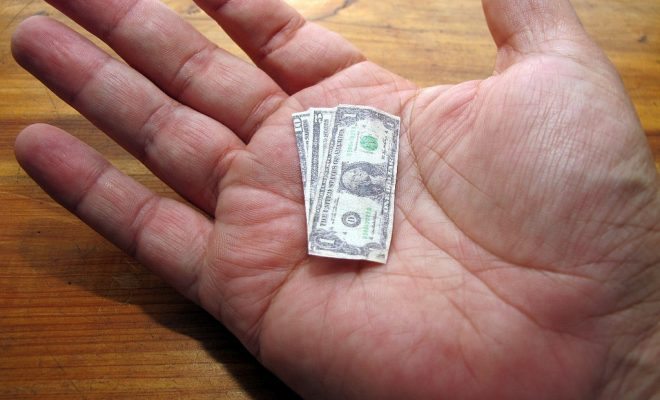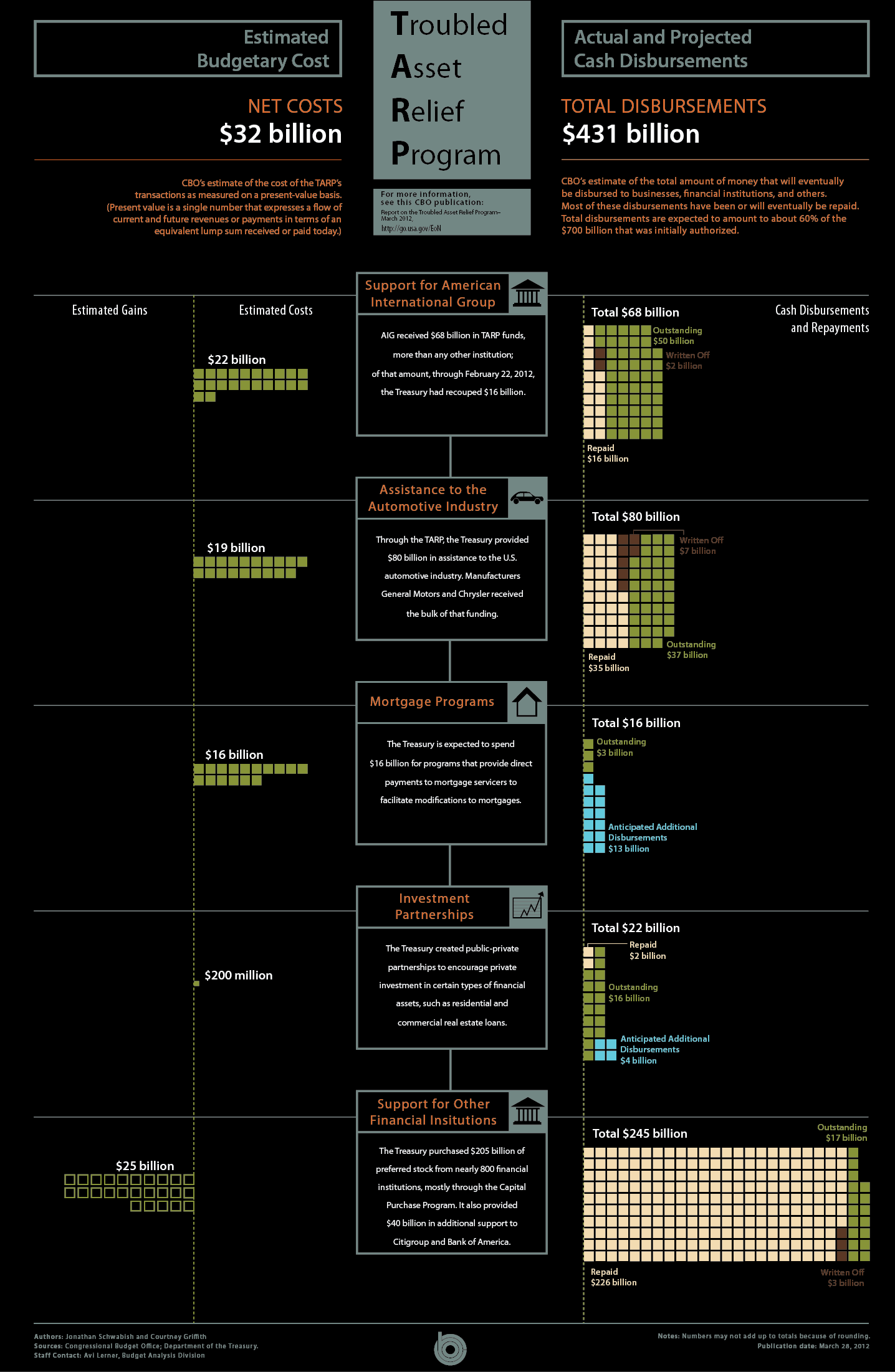 "the shrinking dollar" courtesy of [frankieleon via Flickr]
"the shrinking dollar" courtesy of [frankieleon via Flickr]
Business & Economics
The Troubled Asset Relief Program (TARP) Six Years Later
TARP is the Troubled Asset Relief Program, created to help stabilize the financial system during the financial crisis of 2008. This program was the focus of significant debate when it was created. Read on to learn about the program, the different sides of the debate, and how it fares a few years after its inception.
What is TARP?
TARP was authorized by Congress through the Emergency Economic Stabilization Act of 2008 (EESA), and is overseen by the Office of Financial Stability at the U.S. Department of the Treasury. It was essentially a way for the government to address some of the problems of the 2008 subprime mortgage crisis. It allowed the government to buy some stocks from big banks and other financial institutions while those companies were struggling, with the understanding that in a few years they’d be sold back to the companies. The government would profit, and the companies would be able to get back on their feet. This is obviously a simplified explanation — there was much back and forth on what TARP should and could actually do.
Was TARP successful?
Yes and no — we don’t really know yet. The TARP program was instituted just a few years ago, and while the economy certainly appears to be be getting better, long-term effects are mostly unknown. If anything, programs like TARP are more frequently invoked as political talking points rather than economic topics of discussion. There is also some disagreement as to how much TARP actually cost taxpayers — with so many different moving parts, it’s difficult to calculate. What seems most striking however, is the ire that TARP and other “bailout” programs received.
What was the argument for TARP?
Proponents believe that TARP helped prevent a financial Armageddon by directly or indirectly injecting funds into banks that were on the brink of collapse. Even those who didn’t necessarily agree with the way that TARP was enacted agreed that it was essential to keep things afloat during such a turbulent period of American economic conditions. As former GOP Presidential nominee Mitt Romney put it:
The TARP program, while not transparent and not having been used as wisely it should have been, was nevertheless necessary to keep banks from collapsing in a cascade of failures. You cannot have a free economy and free market if there is not a financial system… The TARP program was designed to keep the financial system going, to keep money circulating in the economy, without which the entire economy stops and you would really have an economic collapse.
This reduced the number of lost jobs by approximately 85 million, reduced or displaced the number of housing foreclosures by approximately three million, and increased consumer confidence. It cost taxpayers $50 billion, which is 85 percent less than the Congressional Budget Office’s original estimate. Additionally, banks have returned at least 78 percent of their borrowed TARP funds with interest. Those in favor of TARP also praise its ability to infuse liquidity and flexibility into a struggling economy.
What is the argument against TARP?
Opponents believe that TARP was a rushed, ad hoc policy. Even if it helped prevent a complete financial meltdown, it did not live up to one of its major original goals of supporting struggling homeowners. Its Home Affordable Modification Program (HAMP) prevented less than half of the foreclosures that original estimates projected it would. TARP only helped the big banks grow bigger and did little to help the common man on Main Street. Such programs set a bad precedent and implicitly encourage banks to continue making risky choices.
Opponents also argued that because the United States is a democracy the American people shouldn’t have to support a program, like TARP, that received such intense backlash from the public. The political toxicity made it more dangerous, to the point where some politicians didn’t even want to discuss it. That could have prevented much-needed discussions to help improve the program, and make it even more effective. Even if it did work in some ways, it’s difficult to bill such a despised program as successful. As Anil Kayshyap of the University of Chicago put it:
The TARP was presented by former Treasury Secretary Hank Paulson in a misleading way, because buying toxic assets never made sense. That confusion led to the populist rhetoric that TARP was just a bailout for the banks. “The public’s frustration has led to a general rise in populist political rhetoric and has polluted the policy discussion in many other areas.” Also, it did nothing to forestall foreclosures.
Conclusion
TARP was an attempt to fix a huge problem — the monumental financial crisis that the United States was facing. Six years we still see some after-effects of the crisis, and whether or not we’re out of the woods completely is a topic that is still up for debate, but the long-term effects of programs like TARP probably won’t be known for a few years. The arguments will continue, however — look for economic arguments that invoke memories of TARP to be present in both the 2014 and 2016 elections.
Resources
Primary
Federal Reserve: TARP Information
Additional
CBS: Auto and Bank Bailouts Prove Effective
Seeking Alpha: The Five Most Effective Bailouts
The New York Times: Audit Finds TARP Program Effective
Phys Org: Are Corporate Bailouts Effective?
TIME: Bailout Report Card: How Successful Have the Financial-Relief Efforts Been?
The New York Times: Where the Bailout Went Wrong
Reuters: Are Americans Really Benefiting From TARP Repayments?
Politico: Criticism of TARP Persists









Comments